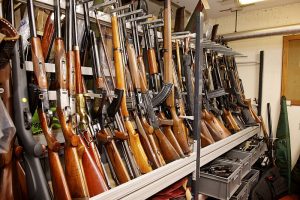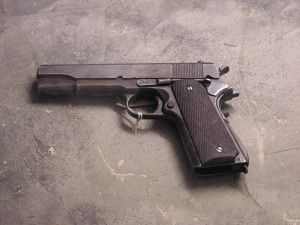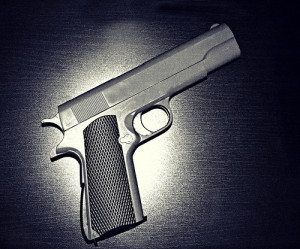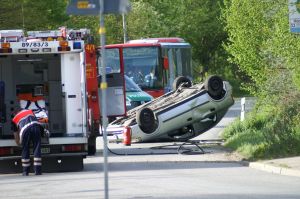A Chicago man was charged with aggravated battery, aggravated discharge of a firearm and aggravated discharge of a firearm near a school in late May following a shooting of a man near a Lawndale elementary school.
Chicago Aggravated Discharge of Firearm
You can find an in-depth discussion on the differences between battery and aggravated battery on my website, and last week I discussed one aspect of aggravated discharge of a firearm on the blog, as it pertains to firing at a vehicle. Discharge of a firearm is also automatically upgraded to ‘aggravated’ if the discharge occurs within 1,000 feet of school property or any school activity, regardless of whether school is actually in session.
As odd as it seems, in this case if the shooting had occurred 1,001 feet from the school, the defendant would have been charged simply with aggravated battery and discharge of a firearm. But because the shooting occurred closer to the school, he was slapped with the additional charge of aggravated discharge of a firearm, all because of the location.
Aggravated discharge of a firearm near a school is a Class X felony, punishable by no less than 10 and no more than 45 years in prison.
Defense Against Aggravated Discharge of a Firearm near School
As in any criminal defense, the first step is to determine whether the evidence supports a conclusion that the defendant was in fact the shooter. Eyewitness testimony is often unreliable. If that is the only evidence tying the defendant to the scene of the crime, it can often be successfully disputed in court, particularly if other evidence tends to disprove the prosecution’s contention that the defendant committed the crime.
If the charges were based in whole or in part on forensic evidence, it is important that a team of forensic experts examine the evidence in order to determine whether the prosecution’s experts came to the right conclusion. For example, if an arrest was made based on forensic evidence linking the gun to the defendant, we would want to examine:
- Whether the defendant’s fingerprints were found on the weapon;
- Whether any other fingerprints were found on the weapon, and;
- Whether gunpowder residue matching the weapon was found on the defendant.
Lack of fingerprints or gunpowder residue linking the defendant to the weapon, or the presence of another set of fingerprints on the weapon, would help plant doubt on the prosecution’s assertion that the defendant was in fact the shooter.
Aggravated discharge of a firearm requires that the defendant intentionally fired his weapon. Our team of forensic experts would also examine whether there is any possibility that the gun could have been discharged due to a malfunction. If this were the case, it would negate the intentional requirement and result in a dismissal of the charge.
Aggravated discharge of a firearm in Illinois also requires that the defendant knowingly discharged the firearm near the school. If it can be shown that the defendant did not know that he was in a school zone when the shooting occurred – for example, if there were no signs at the location of the discharge indicating that he was in a school zone – then it may be possible to have the charges dismissed. Continue reading
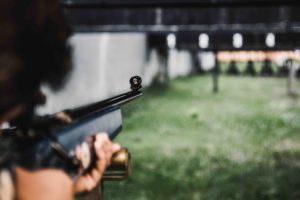 Many people in Chicago find it hard to believe that criminals involved in any mass shooting have a chance to defend themselves. This is because of the seriousness of the offenses that result from this crime and the restrictive nature of Chicago gun laws. With the right legal advice, however, an individual charged with a mass shooting can successfully defend his or her case.
Many people in Chicago find it hard to believe that criminals involved in any mass shooting have a chance to defend themselves. This is because of the seriousness of the offenses that result from this crime and the restrictive nature of Chicago gun laws. With the right legal advice, however, an individual charged with a mass shooting can successfully defend his or her case.  Chicago Criminal Lawyer Blog
Chicago Criminal Lawyer Blog




